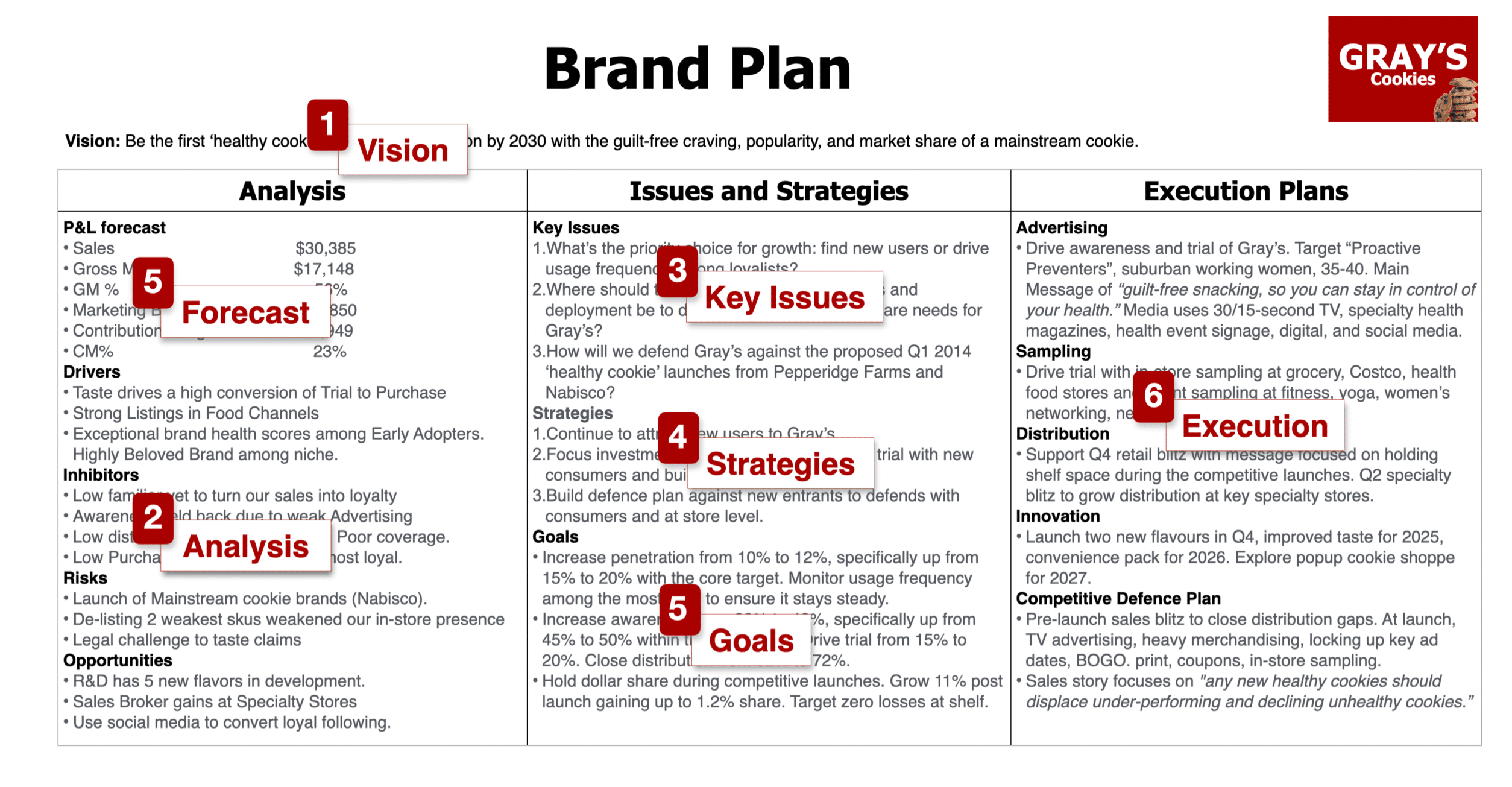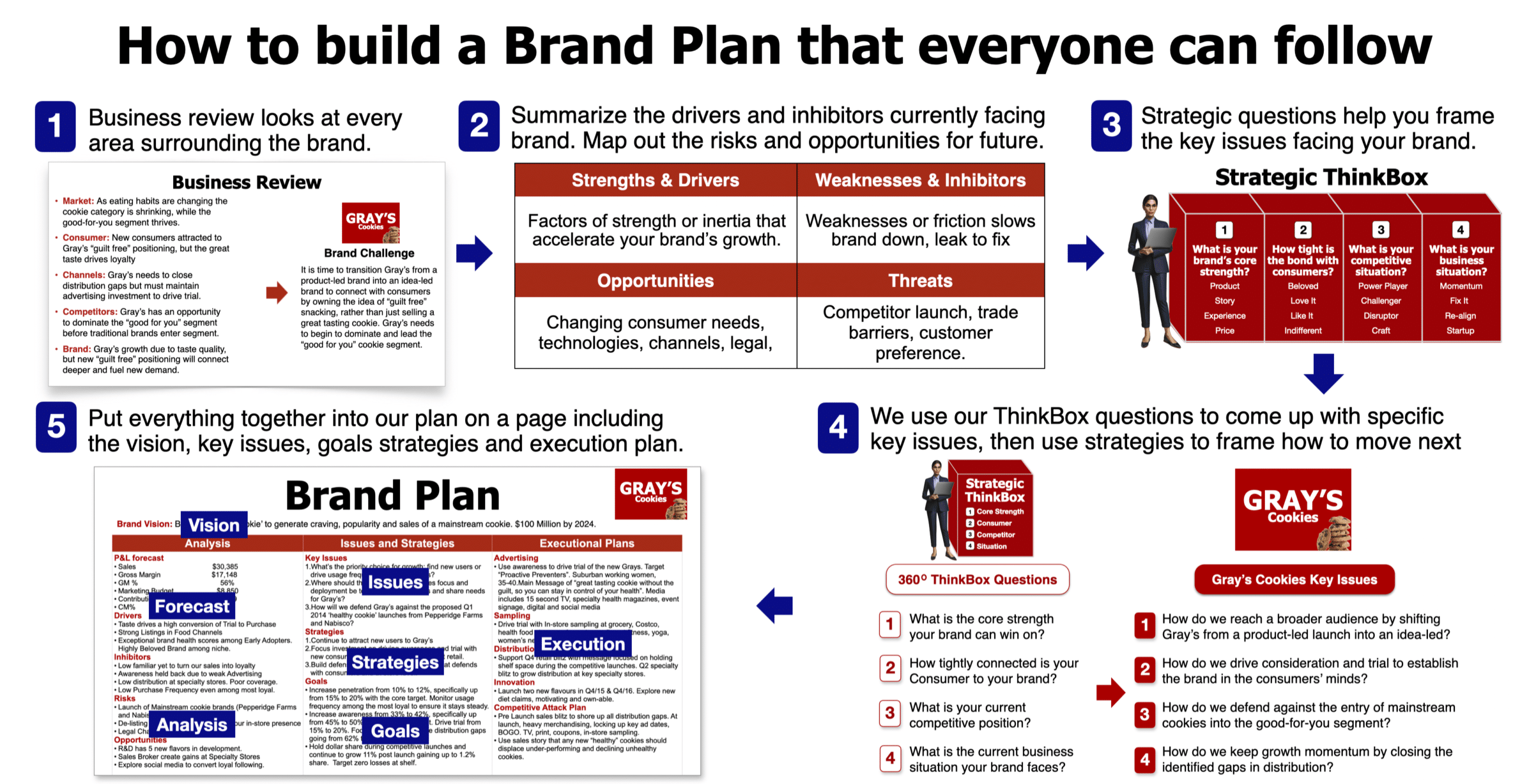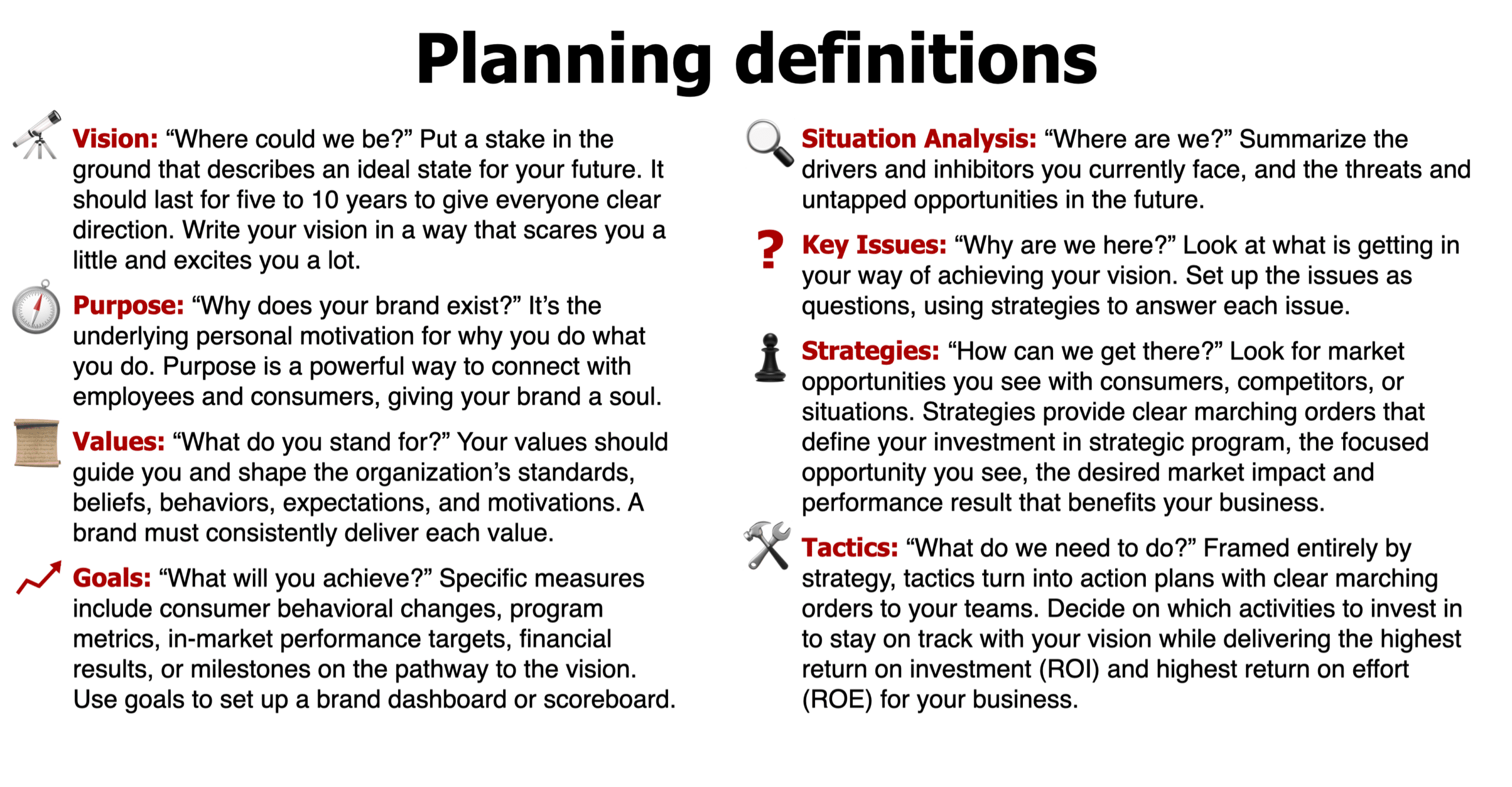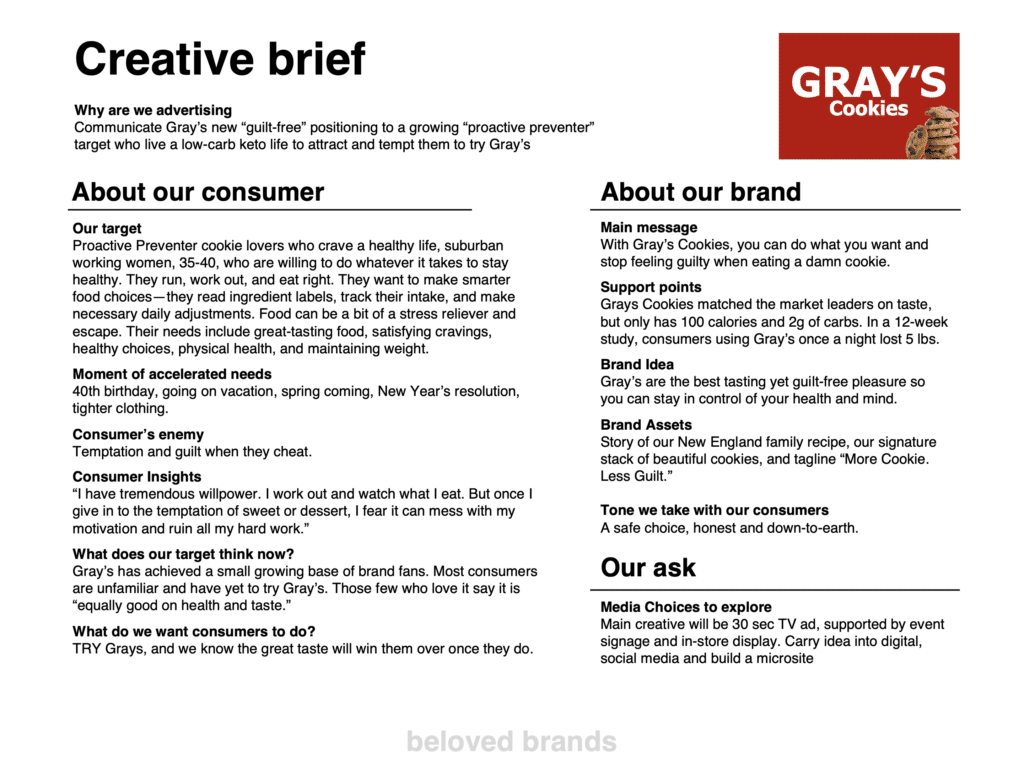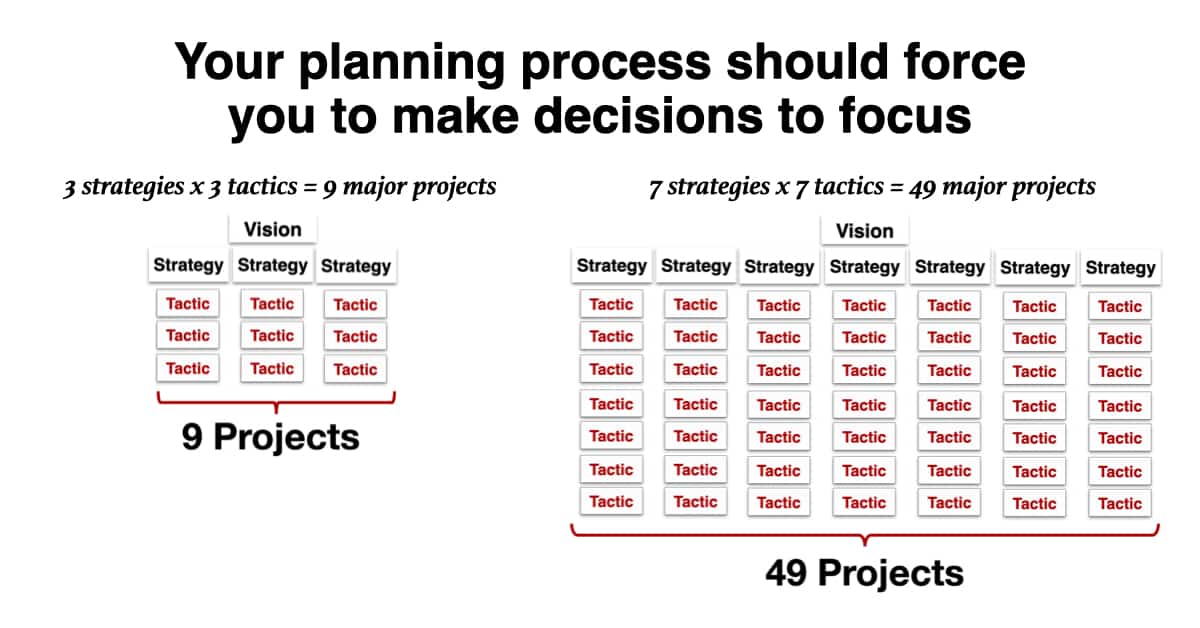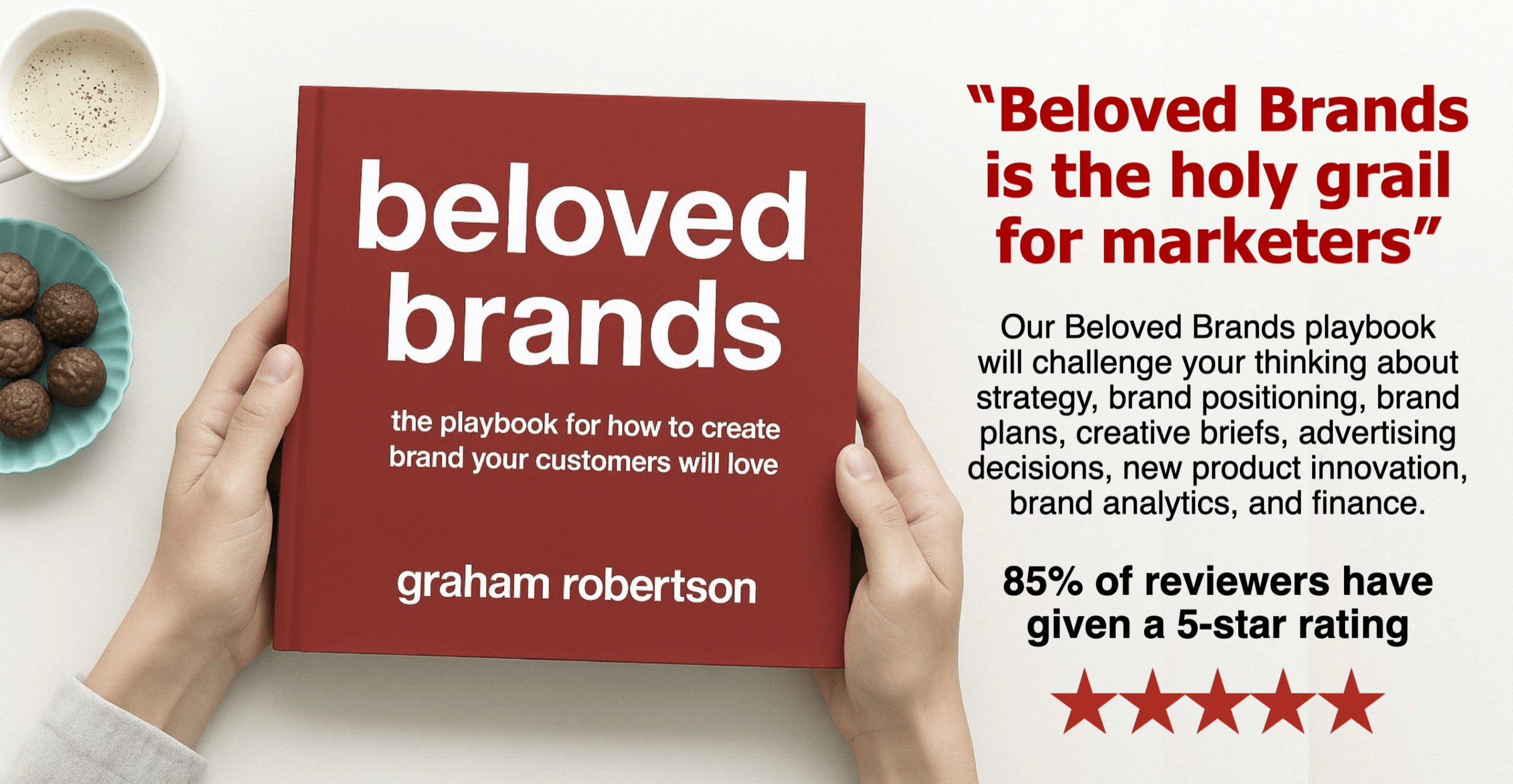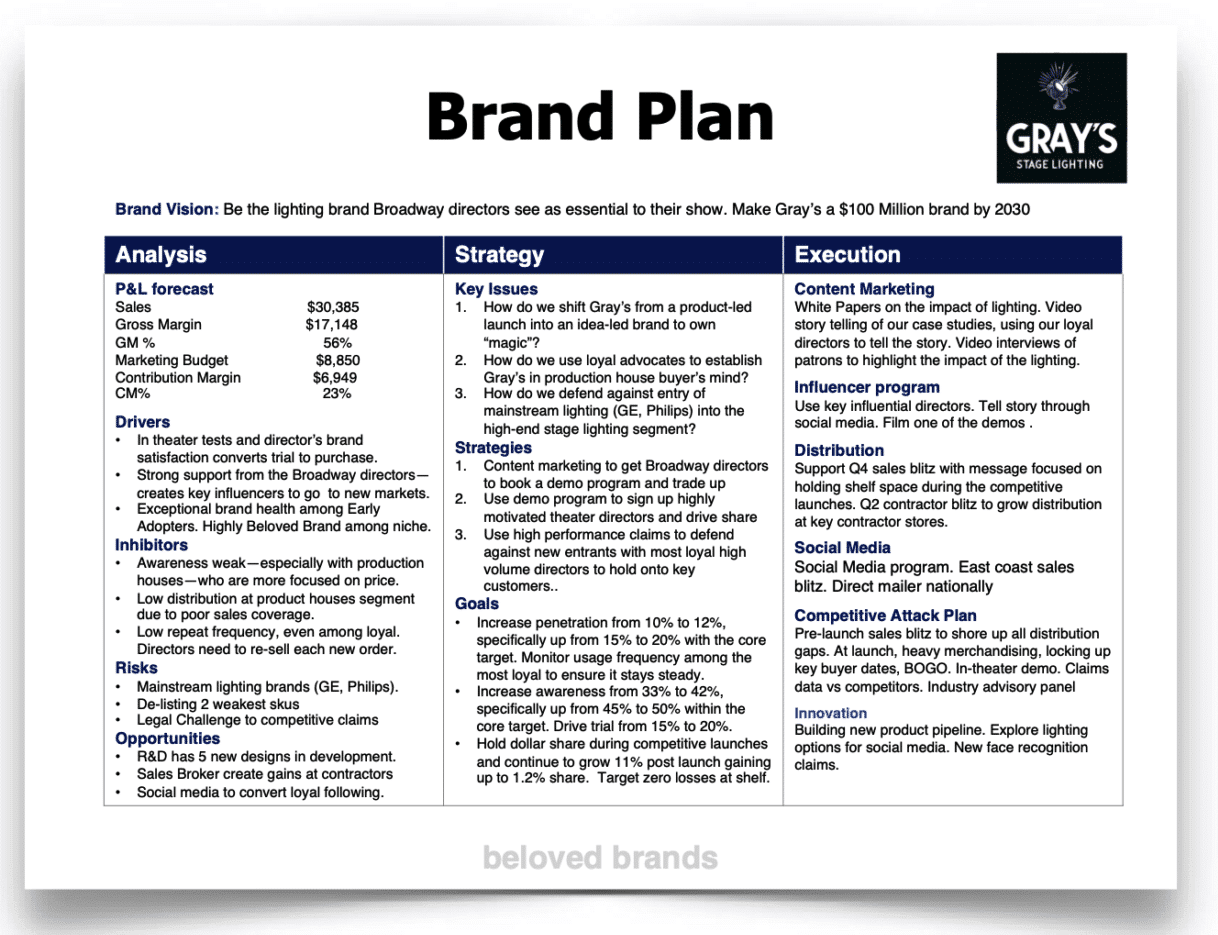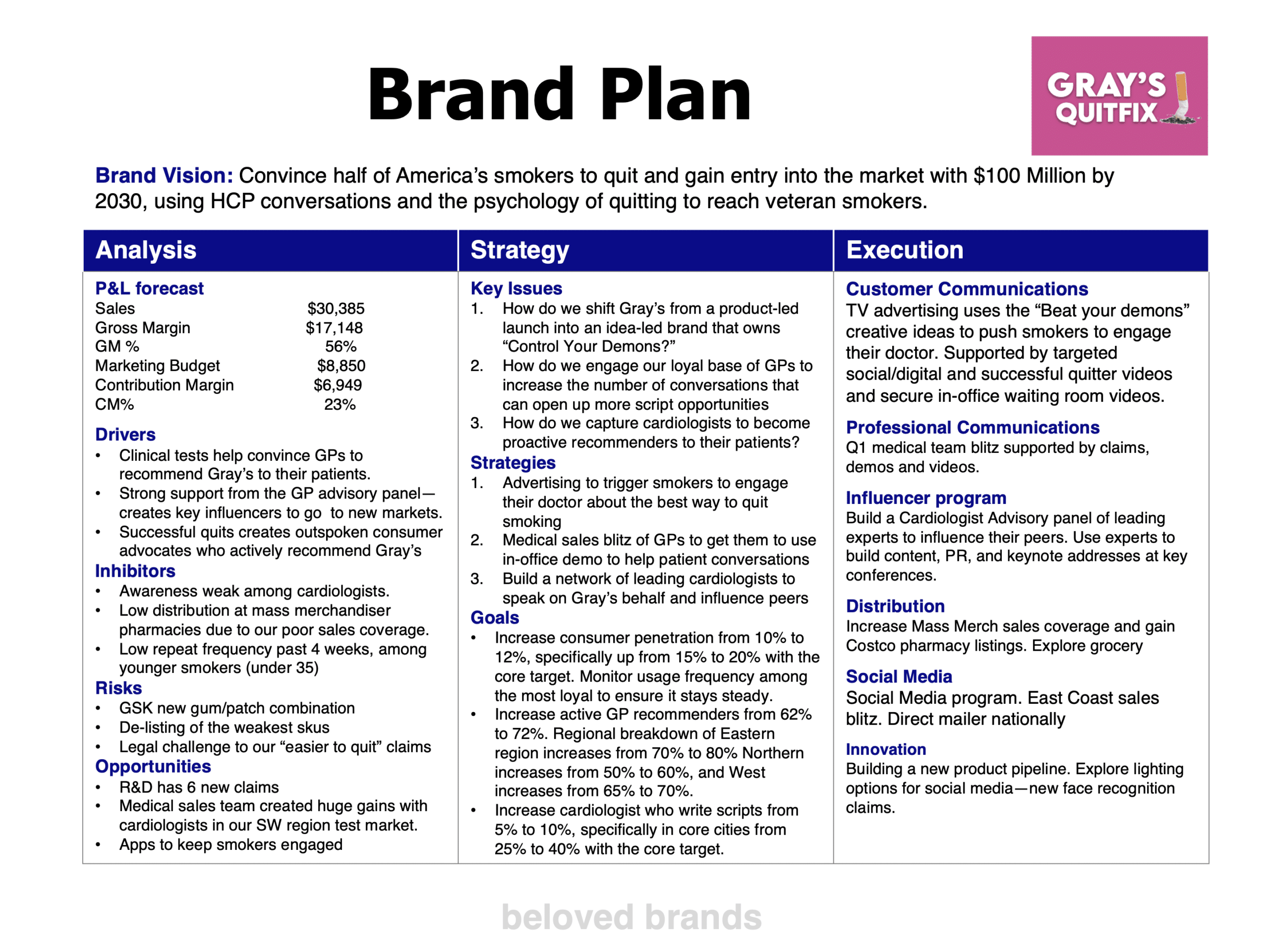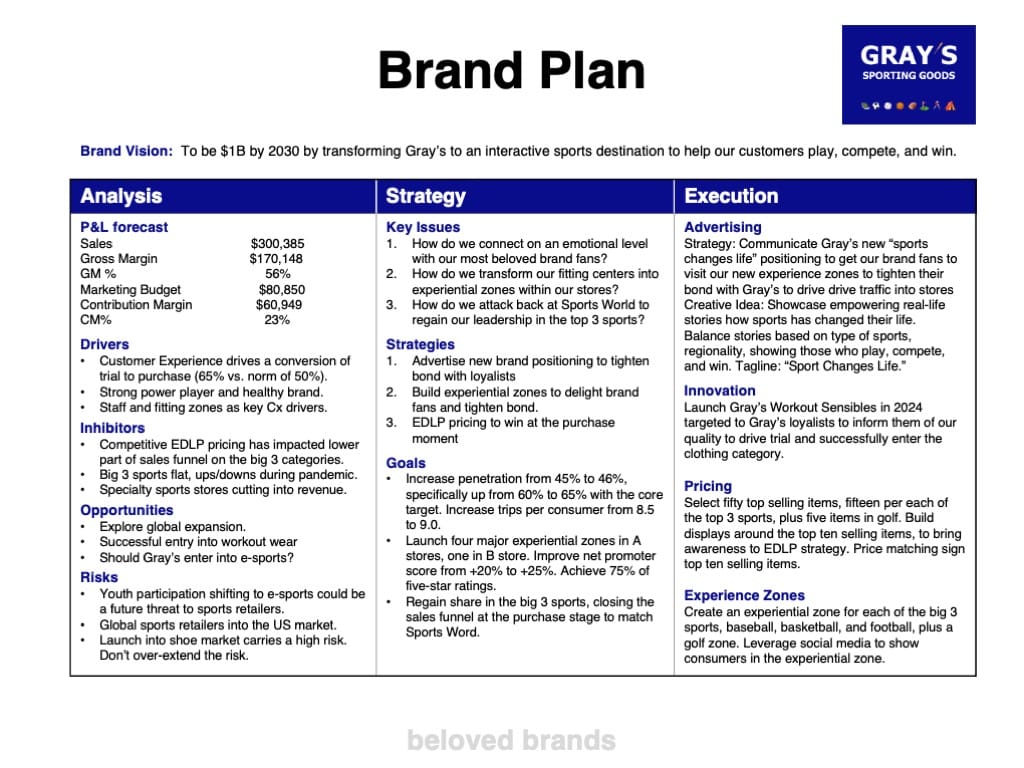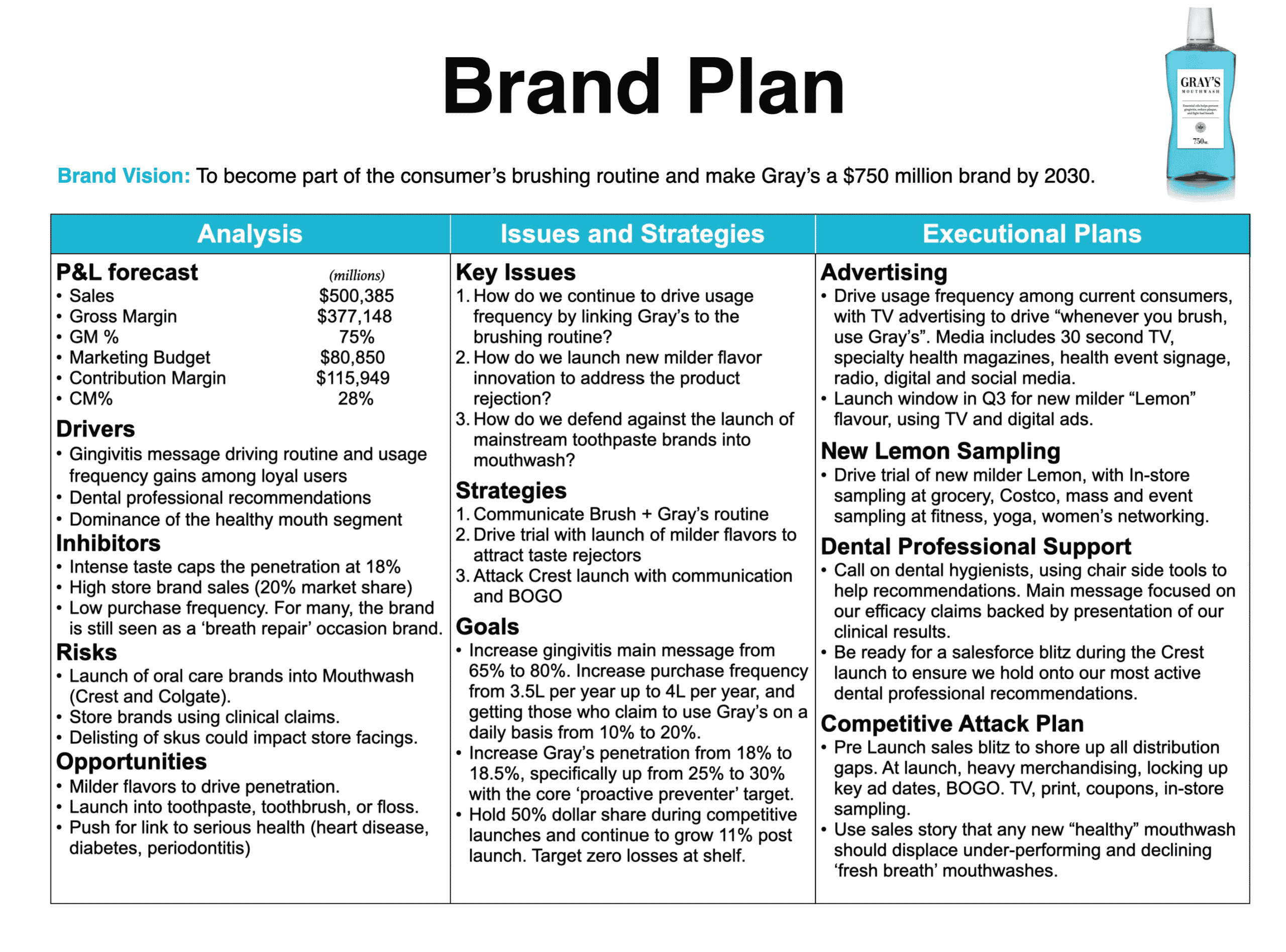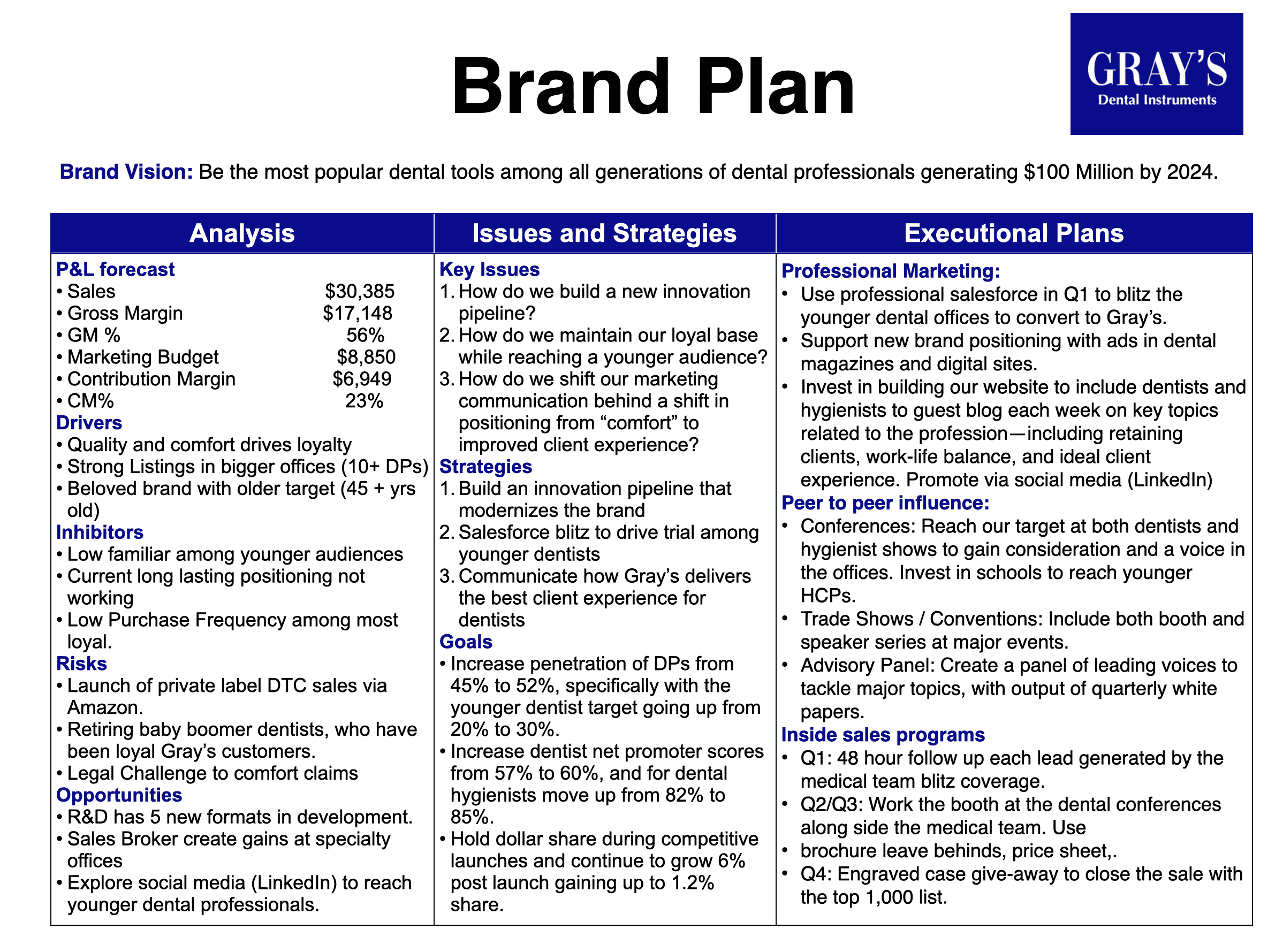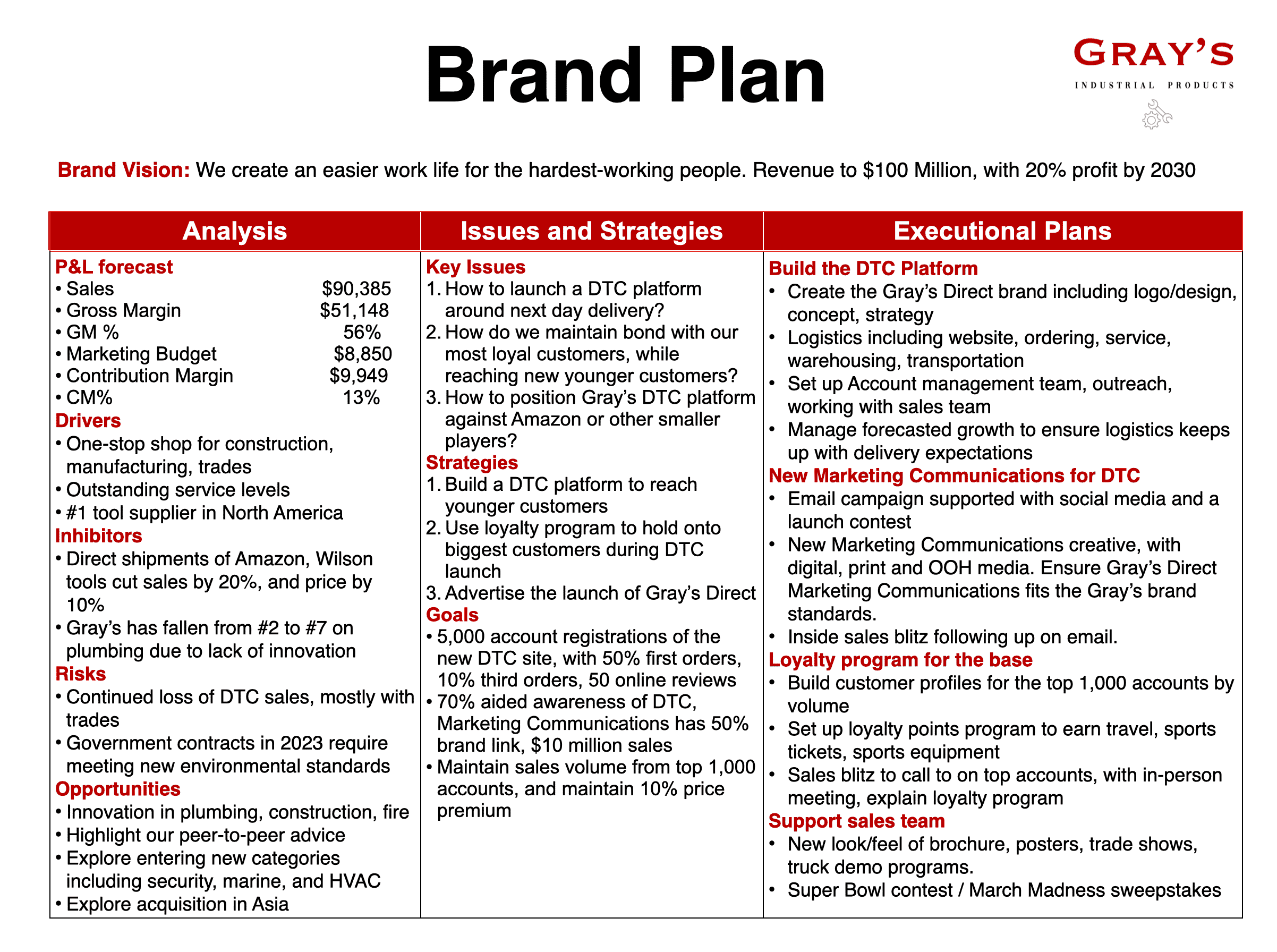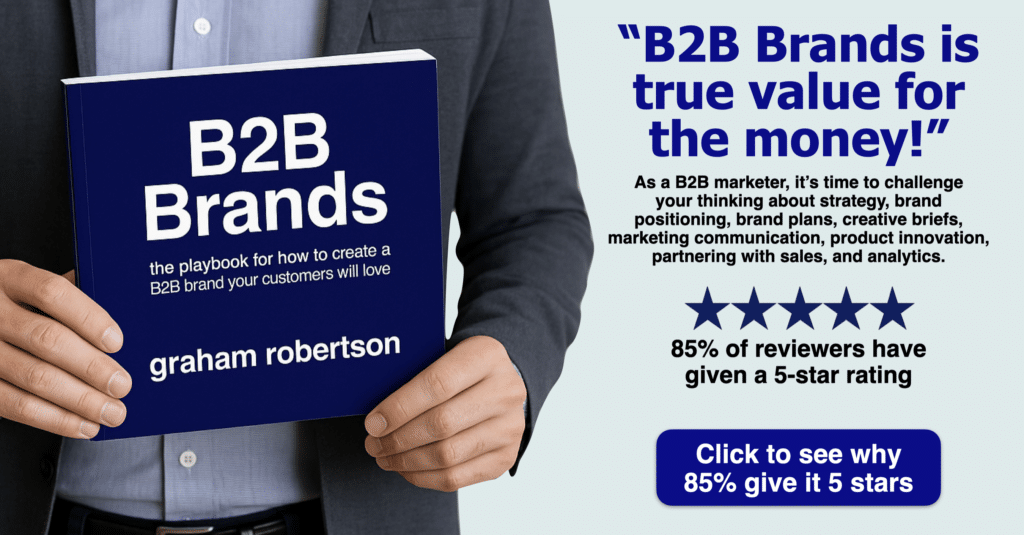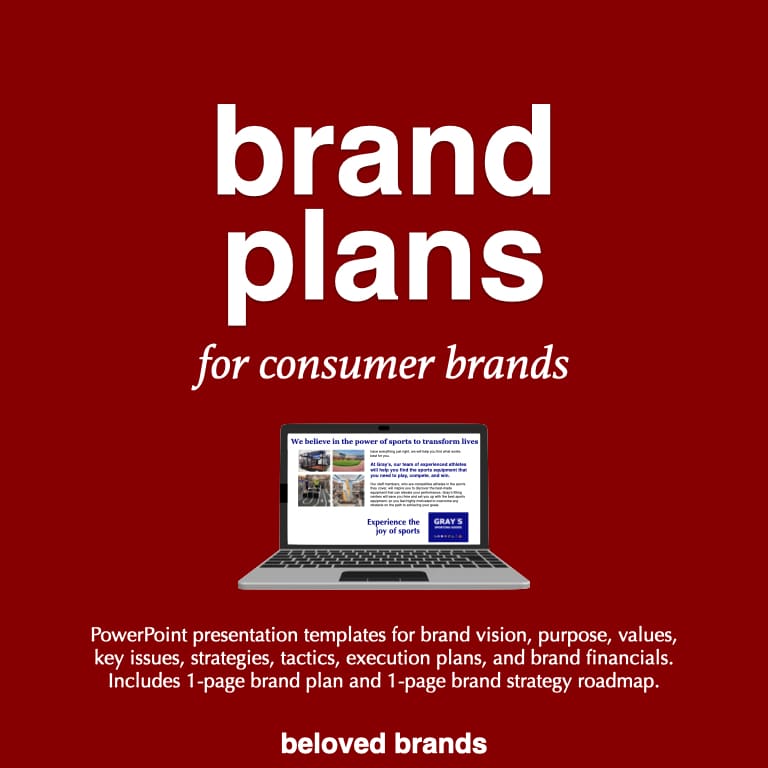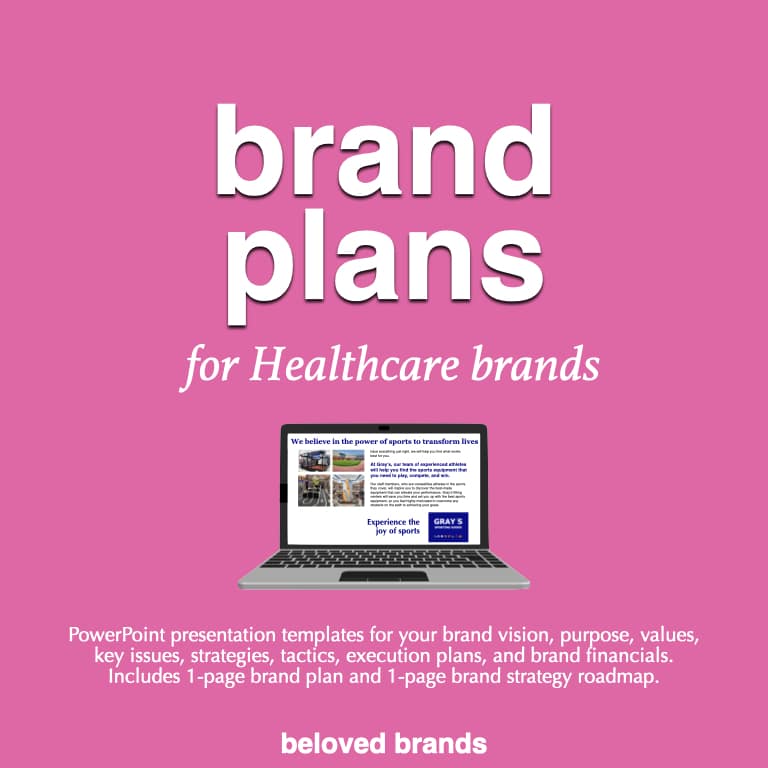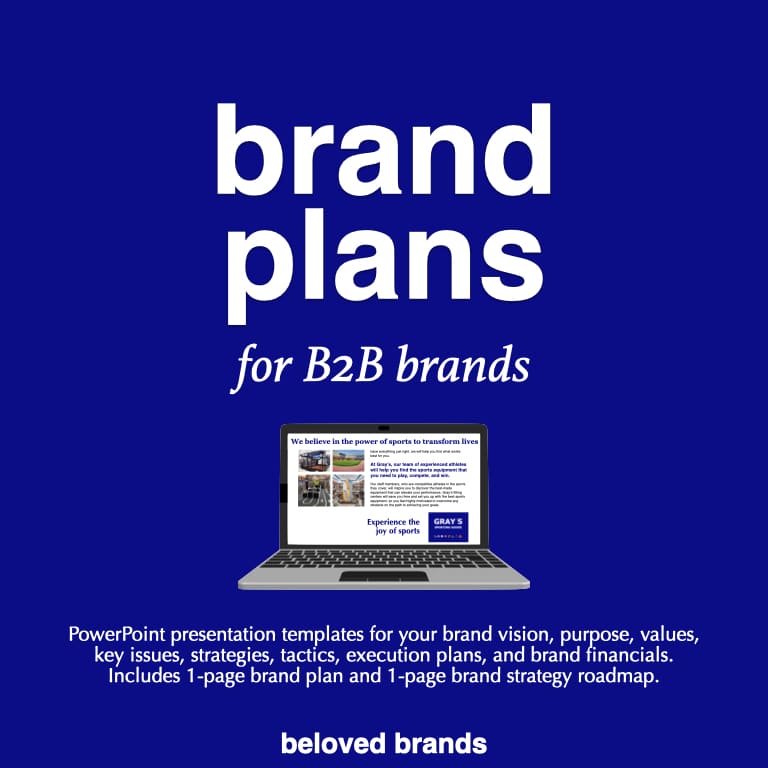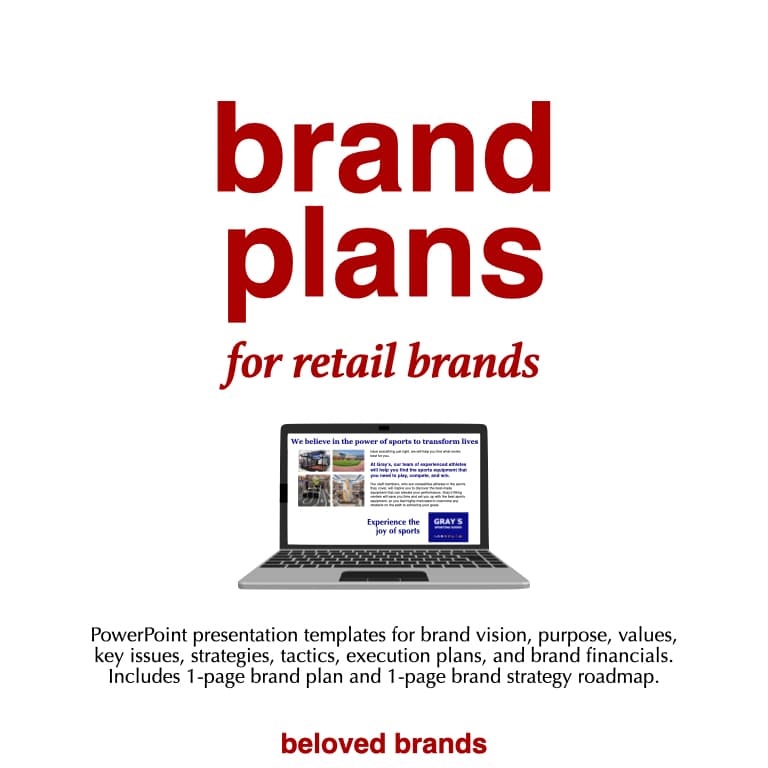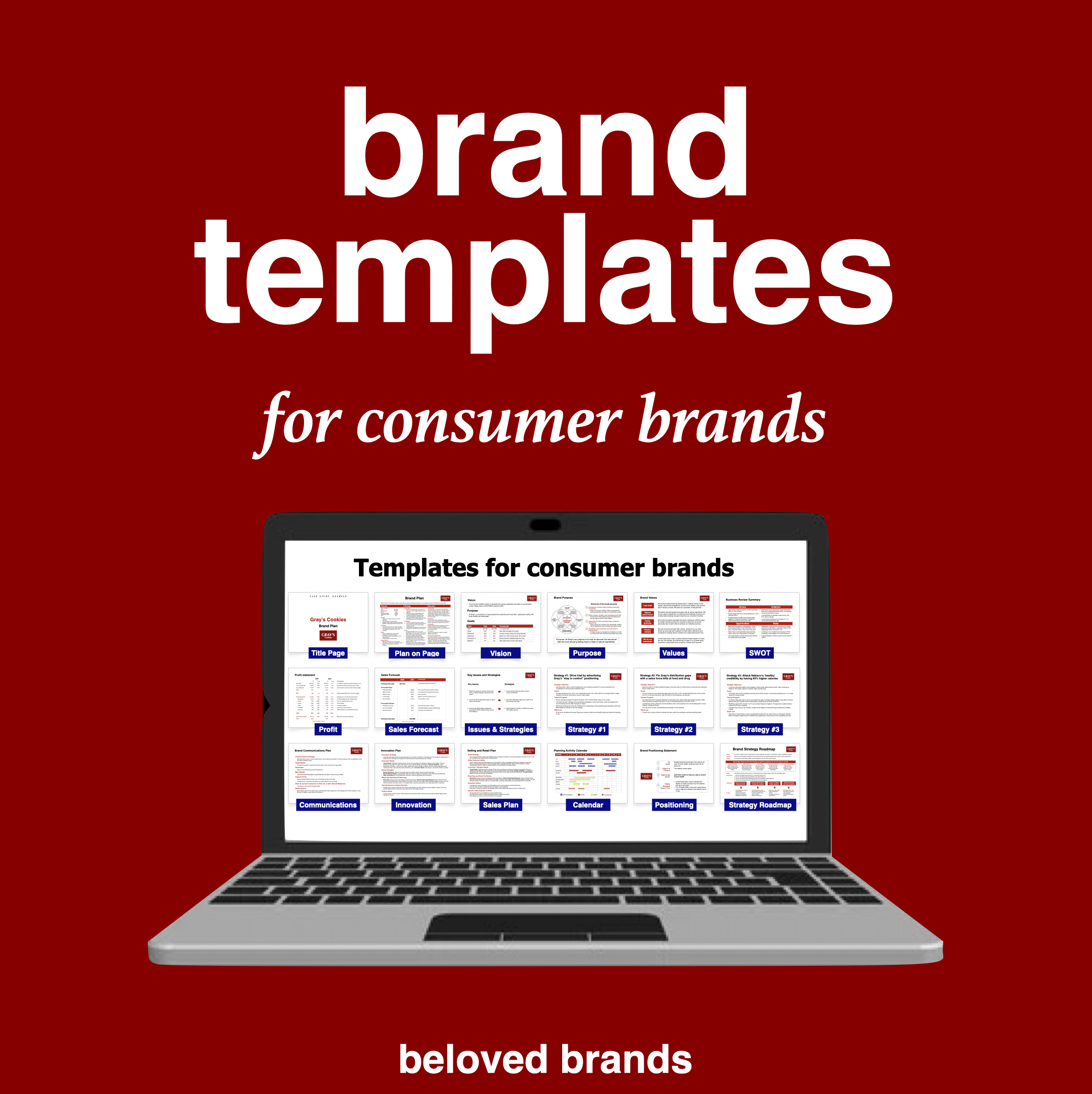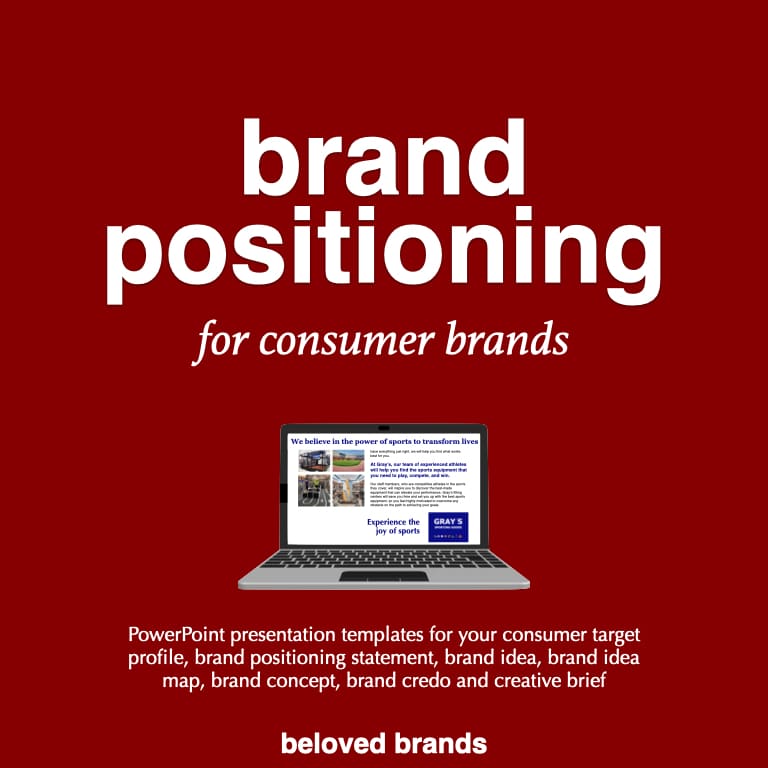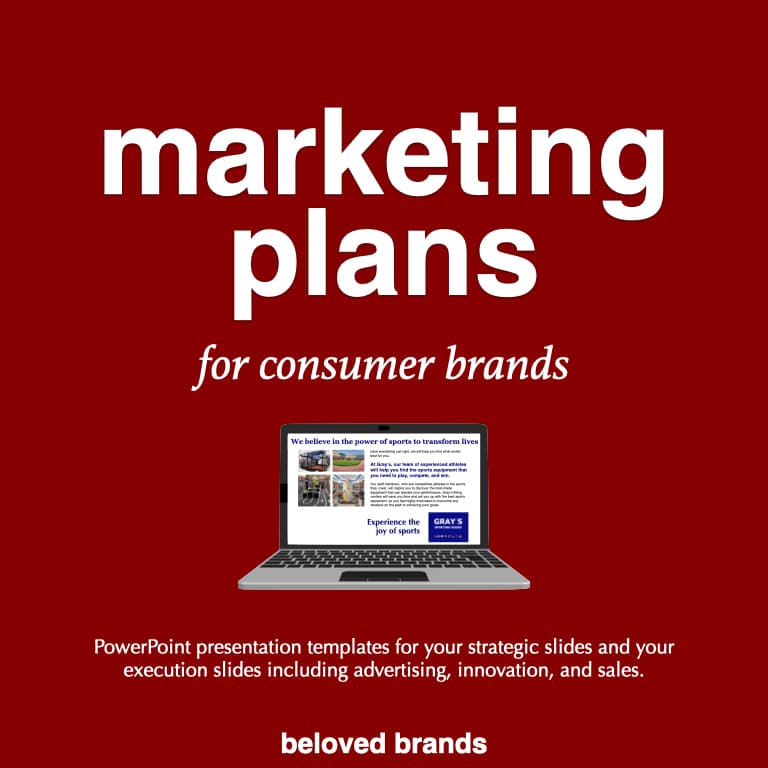Without question, creating a brand plan presentation is a powerful way to earn the trust of your leadership team. However, it’s unlikely anyone will read it a second time. Our one-page Brand Plan will keep everyone aligned with your brand strategy. In this article, I will share plenty of Brand Plan examples and show how to use our Brand Plan template so you can build your own plan.
Our streamlined one-page brand plan template ensures everyone involved is aligned and informed. It captures the vision, delves into analytics, addresses key issues, outlines strategies and goals, and marketing execution plans. We provide clear brand plan definitions to enhance your understanding and fluency.
One-page brand plan template
Does everyone on your team know their role and know how they contribute to building a successful brand?
I first developed this one-page brand plan template when I led a team with 15 brands. It helped me see the big picture quickly, rather than having to hunt through a big thick binder. Even worse is now looking through a confusing share drive to sort through a bunch of 50-slide presentations.
Most importantly, the sales team appreciated the ability to see the entire plan on one page. Many salespeople had the same 15 brands to manage with their customers. Unlike the brand team, they don’t want to work with binders or big PowerPoint decks.
Everyone who works on the brand should unquestionably receive the one-page brand plan and keep it nearby to guide day-to-day decisions. For example, below is the one-page brand plan template we use.
Your one-page brand plan template can align marketing, sales, finance, supply chain, product development, human resources, and outside ad agencies. Lastly, it helps you stay focused on delivering what you said.
How to work the one-page Brand Plan template
The analysis section lays out the summary from the deep-dive business review. As a rule, you should conduct a deep-dive business review annually. Essentially, look at the market, consumer, channels, competitors, and the brand. First, what is driving your brand’s growth? Second, what is inhibiting your brand’s growth? Third, which threats could hurt your brand? Finally, what opportunities are facing your brand?
The key issues and marketing strategy section focuses on the top three issues getting in the way of achieving your vision. Importantly, put the key issues in question format. Furthermore, we introduce you to our Strategic ThinkBox which uses four questions to help you uncover the key issues facing your brand. First, what is your brand’s core strength? Second, how tight is the bond with consumers? Third, what is your competitive stance? Finally, what is the business situation the brand faces? In addition, the strategic solutions should be the answers that match up to each of those questions. Set goals to measure your brand’s performance against each marketing strategy.
The marketing execution plan section maps out the specific plans for each chosen execution area that line up with essential consumer touchpoints. For example, include execution plans for brand communication, product innovation, and sales.
Process for building a Brand Plan
To illustrate, click on the process we use as part of our one-page brand plan template.
To illustrate, click on the Plan definitions we use as part of our one-page template.
If you are looking to go deeper on how to write each element of a marketing plan, click on the following link: Step-by-step guide for how to write a Marketing Plan.
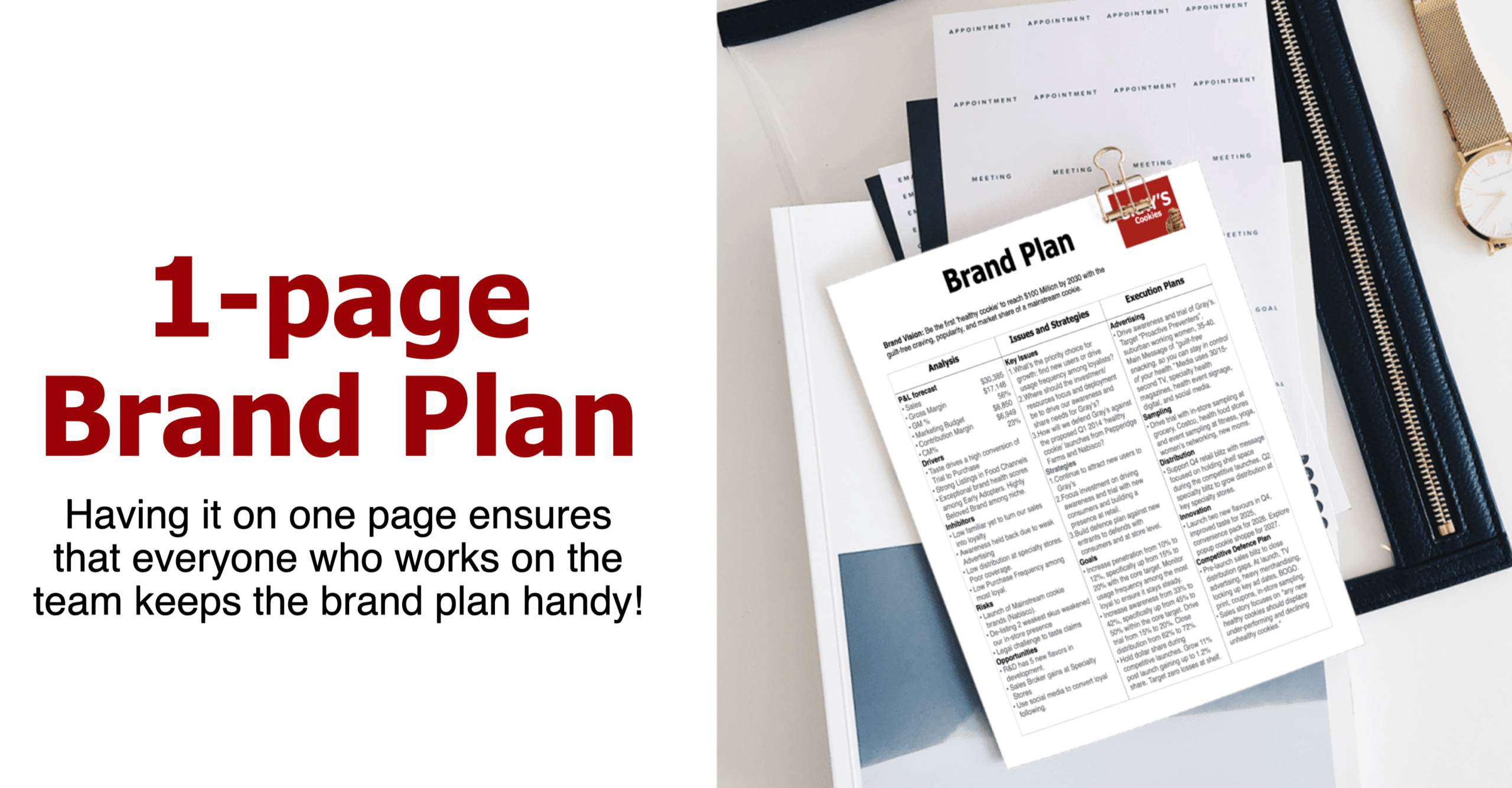
Back-to-back one pagers
Now, you can get everyone on the team to keep the one-page brand plan and some execution plan handy.
I recommend laminating two documents back-to-back. For instance, your agency should get the Brand Plan and the Creative Brief, your R&D could get the Innovation Plan, your key salespeople could get the In-store Merchandising Plan.
To illustrate, click on the Brand Plan template or Creative Brief we use as part of our one-page template.
The power of threes in a strategic plan
I believe in “the power of threes.” Your one-page plan should force you to decide where to focus and allocate your limited resources. The other beauty of the one-page brand plan is that it forces you to focus on less. That helps focus your resources.
As a guideline, for an annual plan, I recommend you focus on the top three strategies and then focus on the top three tactics for each strategy.
That means nine significant projects for your brand to focus your limited resources against during the year. Compare the subtle difference with what happens when you try five strategies with five tactics: the plan quickly explodes into 25 projects and seven by seven leads to 49 projects. That would cripple your brand’s limited resources. What if you never got to the forty-ninth project, but it was the most important project? So, with fewer projects, you can execute everything with full passion and brilliance.
I see too many marketers with a long list of things they need to do. They end up so busy that they have no time to think about what matters to their brand. You will have little passion for any particular project, trying to get everything done. In short, all of the important projects need more resources to have the impact you hope.
You can purchase our brand plan template
Click on the option that makes sense for your brand
Frequently Asked Questions
What are the major steps in writing a brand plan?
- Every plan must start with a vision that acts as the guiding line to follow. Make sure your sales goal is tied to that vision.
- Second, conduct a thorough business review to focus on the strengths, weaknesses, opportunities, and threats.
- Third, use our Strategic ThinkBox to determine the brand’s key issue questions. Then, write strategies that answer the issues.
- Then, hold a brainstorming session with your team on tactical ideas. Build plans to help steer the subject matter experts, including brand communication, innovation, and sales/retail.
- Last but not least, create goals and measure performance. The goals should be completed at the end to ensure you measure the strategies and tactics.
Why is it important?
The main role of a brand plan presentation is to gain the approval of your management team, including the C-suite or CEO. Importantly, could you explain how you will use your resources to drive the growth of your brand? Essentially, it becomes the roadmap everyone on your team will follow to help achieve your brand goals. And, it creates the vision, purpose, key issues, strategies, and tactics. We love our one-page plan and the presentation that supports it.
What makes a good brand plan?
First, you must present a cohesive story and have a good brand plan template. If you are standing in front of the room, keep the boss following your story; it will go very well.
Second, I’d like you to take a focused approach. Importantly, they spread limited resources across too many ideas. They make sure each idea has enough resources to make a difference. Otherwise, you will always be disappointed in the results.
Third, the other teams should be involved to ensure they are aligned with the brand plan. Ensure you involve sales, operations, R&D, and your ad agency. And include all those who deliver on behalf of the brand.
Fourth, make sure you seem in control of the conversation. Stay focused. You should have no more than 20 slides.
Finally, I’d like you to stay highly organized. They tell a story. It all works together like an orchestra. Every tactic must line up with a strategy, or senior management will notice. You will be much more likely to gain approval from senior managers.
What is included?
If you are looking for an ideal outline for a brand plan, here is our recommendation: vision, purpose, goals, SWOT analysis, key issues, strategy statements, marketing communications plan, sales plan, innovation plan, forecast, and financials.
Our brand toolkit for consumer brands is our most comprehensive template helps you communicate your brand plans, brand positioning, business review and creative briefs.
Our brand plan template offers slides for vision, purpose, analysis, key issues, strategies, and execution plans, ensuring a thorough approach to your brand’s development. The brand positioning template guides you through defining your target profile, crafting a brand positioning statement, and developing a unique brand idea, concept, values, story, credo, and creative brief. Finally, our business review template provides slides for in-depth analysis of the marketplace, customers, competitors, channels, and your brand.
Choose the right template for your business needs
Marketing Plans for consumer brands
Combining strategic slides for insightful planning and marketing execution slides for seamless implementation, our templates are designed to propel your brand towards success and help you make a lasting impact in the market.



